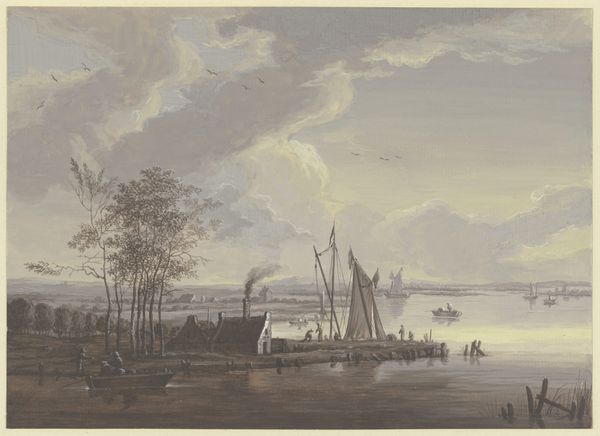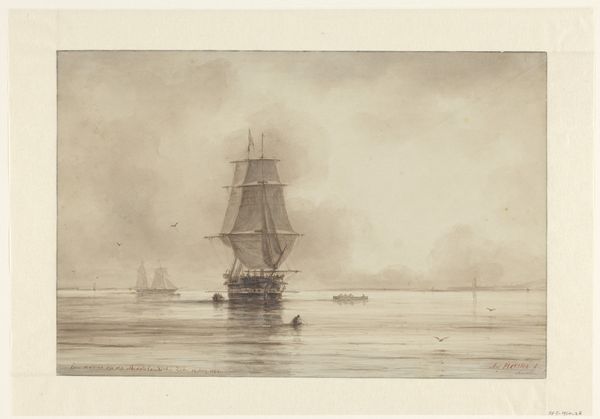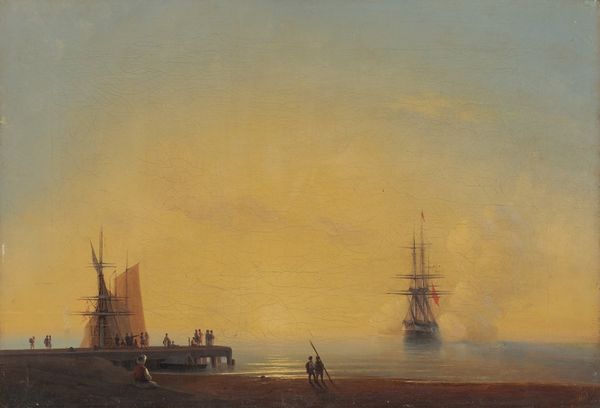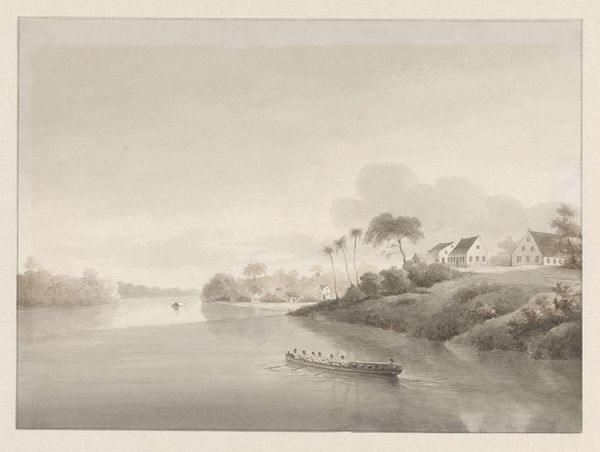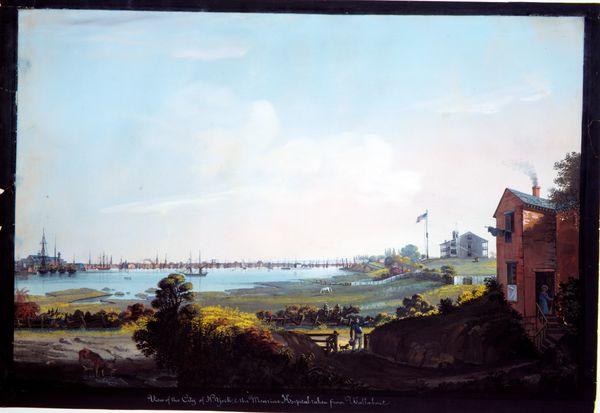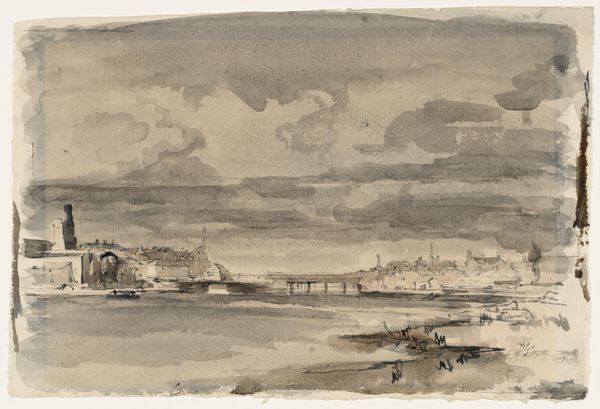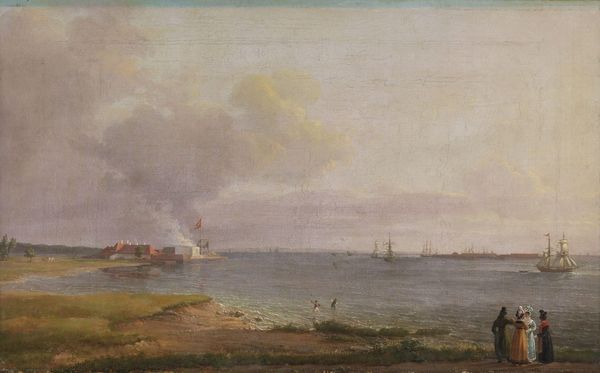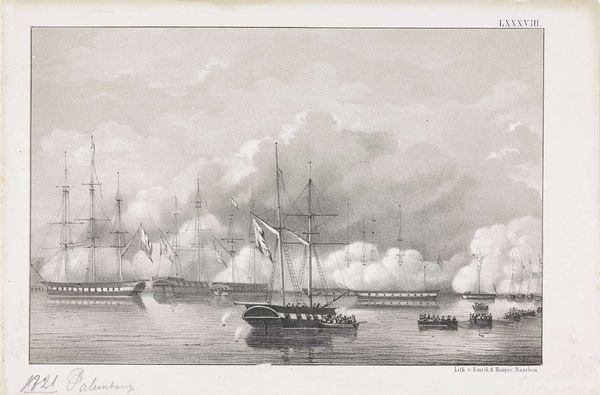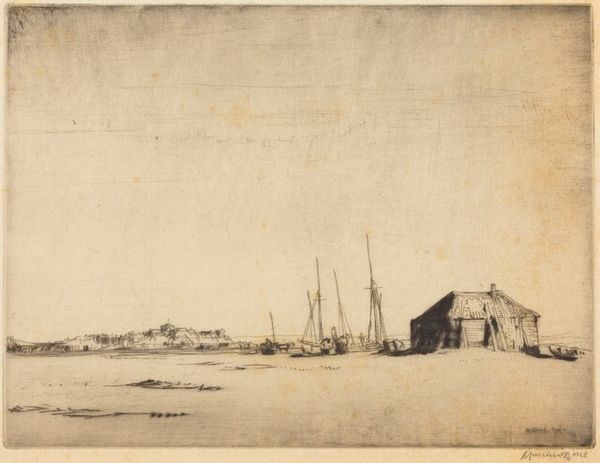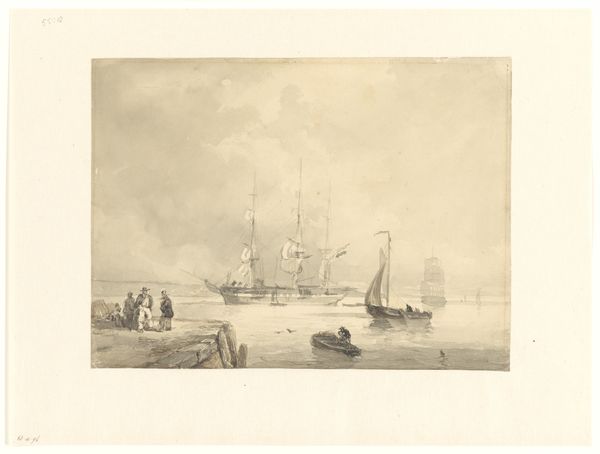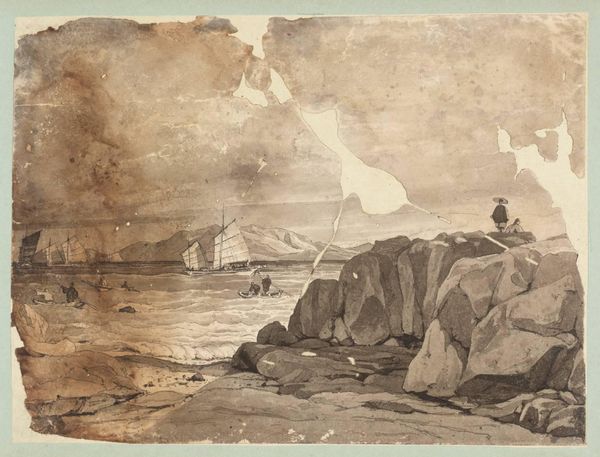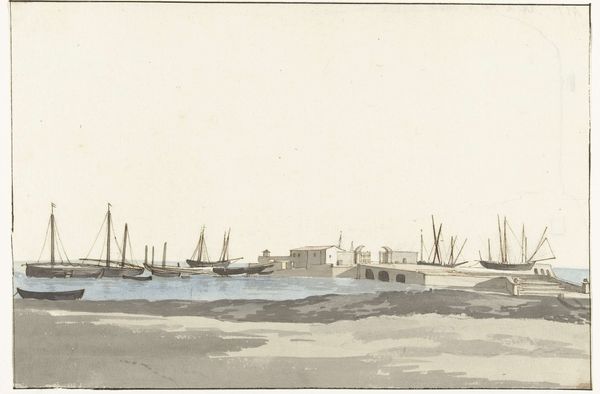
drawing, print, plein-air, paper, watercolor
#
scenic
#
drawing
# print
#
countryside
#
plein-air
#
landscape
#
paper
#
outdoor photography
#
watercolor
#
romanticism
#
water
#
cityscape
Dimensions: 296 × 515 mm
Copyright: Public Domain
Curator: This sepia watercolor, titled "A Boatyard at the Mouth of an Estuary," was created around 1800 by Thomas Girtin and resides here at the Art Institute of Chicago. Editor: It’s immediately striking – a sort of sepia dream. There’s an evocative haze, blurring the details, lending it this wistful quality. It speaks of impermanence, the boats poised at the estuary's edge. Curator: Girtin was quite influential in elevating watercolor as a serious artistic medium. He sought to capture the subtleties of light and atmosphere through direct observation. Notice how he abandons traditional ink outlines, embracing tonal washes to depict form and depth. He really pushed the boundaries of what watercolor could achieve. Editor: The tonal washes – absolutely. It's like a memory softened by time. And that conscious choice is interesting to think about; sepia lends itself so well to nostalgic associations. Does the scene depicted align with England's historical narratives of maritime strength or imperial expansion, or does it propose a different understanding? Curator: Girtin found patrons who wanted to commemorate and display the nation’s topographical wealth. At this moment England was heavily involved in its naval strength, both as a line of defense and a declaration of economic strength. These images affirmed national pride, connecting them directly to a burgeoning sense of maritime prowess and dominion. But it can also be seen as part of a longing for a pre-industrial simplicity. Editor: Yes, the juxtaposition of industry with natural landscapes— a potent image! The estuary itself is interesting as a zone of transition. Was Girtin engaging with any environmental discourse of his time, or any growing unease with industrial growth perhaps? Curator: These drawings were often made ‘en plein air’ capturing fleeting light, so in some ways his emphasis on transient natural beauty suggests an implicit counterpoint to industrial solidity. What’s fascinating is how Girtin's style captures this moment of change, of flux, in England’s story. Editor: So it does, by reflecting the transition through imagery which itself evokes temporality and reflection, so well encapsulated by the blurring effects. It's a wonderful image— it feels very relevant when considering the ebb and flow of history and cultural identity, rendered through land, water, and industry.
Comments
No comments
Be the first to comment and join the conversation on the ultimate creative platform.

